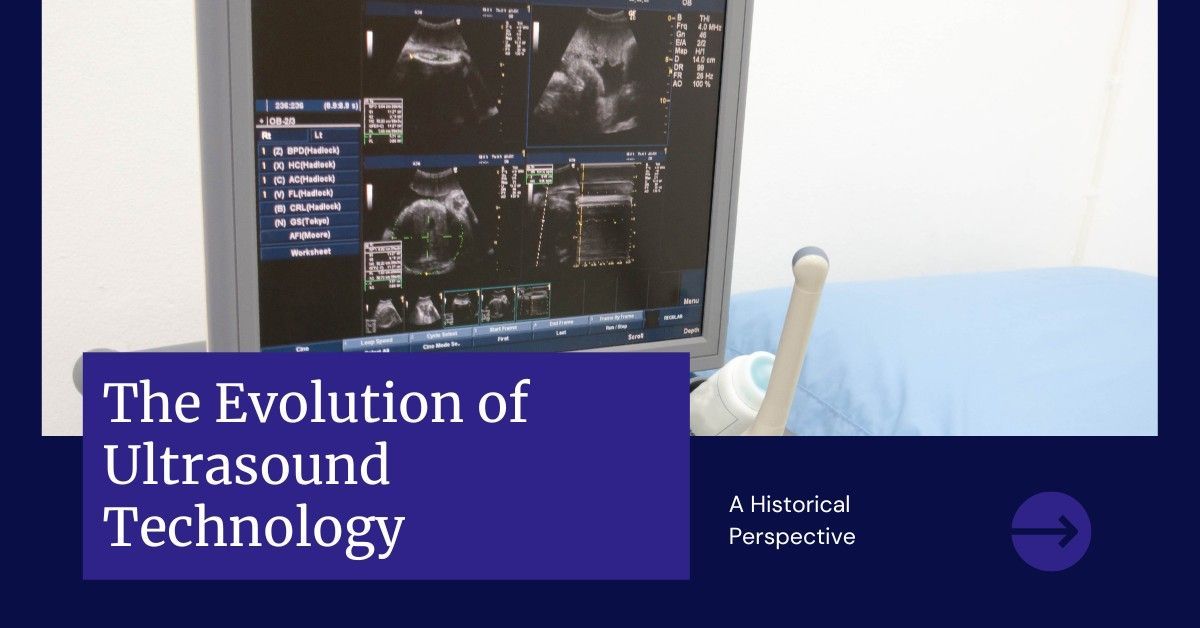The journey of ultrasound technology, from its rudimentary beginnings to its current advanced state, is a remarkable testament to human ingenuity and the relentless pursuit of enhancing healthcare. This article delves into the evolution of ultrasound, tracing its origins, celebrating key breakthroughs, and examining its transformative impact on diagnostics. We also spotlight how institutions like Ecotown Diagnostics are harnessing this technology to improve patient care in Bangalore.
Origins and Early Developments
Ultrasound technology, leveraging sound waves to peer into the body, owes its conceptual roots to sonar technology developed in the early 20th century. The first practical application of ultrasound in medicine is credited to Dr. Karl Dussik in Austria in 1942, who attempted to locate brain tumors using ultrasound transmission through the skull. Although his techniques were primitive by today’s standards, Dussik’s work laid the groundwork for medical ultrasonography.
Breakthroughs and Advancements
The 1950s and 1960s marked a period of rapid innovation, with the development of the first B-mode (brightness mode) ultrasound images, which provided a two-dimensional representation of internal body structures. This was a significant leap from the earlier A-mode (amplitude mode), which only offered a one-dimensional view. Dr. Ian Donald’s pioneering work in obstetrics in the 1950s, using industrial ultrasound equipment, demonstrated the potential of ultrasound in fetal imaging, leading to widespread adoption in obstetrics.
The introduction of Doppler ultrasound in the 1970s was another milestone, enabling the measurement of blood flow and heart functions, thus opening new vistas in cardiac and vascular diagnostics. The 1980s saw the advent of real-time imaging, dramatically enhancing the utility of ultrasound by providing immediate feedback to clinicians.
The 1990s and beyond have been characterized by rapid technological advancements, including the development of 3D and 4D ultrasound, which offer three-dimensional images in real-time, providing unprecedented detail and aiding in complex diagnostic and therapeutic procedures.
Impact on Diagnostics
The evolution of ultrasound technology has profoundly impacted diagnostic capabilities, making it an indispensable tool in modern medicine. Its non-invasive nature, absence of ionizing radiation, and real-time imaging capabilities make it a preferred diagnostic modality for a wide range of conditions.
In obstetrics, ultrasound has revolutionized prenatal care, enabling the monitoring of fetal development, early detection of abnormalities, and planning of interventions if necessary. In cardiology, Doppler and echocardiographic techniques have vastly improved the assessment of heart diseases. Ultrasound is also pivotal in guiding minimally invasive procedures, enhancing precision and safety.
Ultrasound in the Healthcare Ecosystem
The accessibility and versatility of ultrasound have made it a cornerstone in the diagnostic arsenal of healthcare institutions worldwide. In settings like Ecotown Diagnostics in Bangalore, ultrasound technology plays a crucial role in patient care, offering a range of diagnostic services from abdominal scans to echocardiograms. By providing high-quality ultrasound services, Ecotown Diagnostics exemplifies how modern healthcare providers are leveraging this technology to enhance diagnostic accuracy and patient outcomes.
Future Directions
The future of ultrasound technology holds immense promise, with ongoing research focused on enhancing image quality, portability, and functionality. Innovations such as point-of-care ultrasound (POCUS) devices, which are compact and portable, are expanding the use of ultrasound beyond traditional settings, bringing diagnostic capabilities directly to the patient’s bedside. Artificial intelligence and machine learning are also being integrated into ultrasound systems, promising to improve diagnostic accuracy, automate measurements, and even predict outcomes.
Conclusion
The evolution of ultrasound technology from its nascent stages to a sophisticated diagnostic tool is a testament to the relentless pursuit of medical advancement. As we reflect on this journey, it is clear that ultrasound has not only transformed diagnostics but has also profoundly impacted patient care, making diagnostics safer, more accessible, and more accurate. Institutions like Ecotown Diagnostics in Bangalore are at the forefront of utilizing this technology to its fullest potential, ensuring that patients receive the best possible care. As we look to the future, one can’t help but wonder, what will be the next breakthrough in ultrasound technology?








